Industrial steam boilers are a cornerstone of energy-intensive operations—but selecting the right system goes beyond the initial purchase price. Many companies make costly mistakes by overlooking the long-term operational, maintenance, and energy consumption costs. To make a smart investment, you must perform a Lifecycle Cost Analysis (LCCA) that reveals the total cost of ownership (TCO) over the boiler’s lifespan, typically 15–30 years.
To perform a lifecycle cost analysis for an industrial steam boiler, assess all direct and indirect costs from purchase to decommissioning. This includes capital expenditure (CAPEX), installation, fuel or energy costs, water treatment, maintenance, emissions compliance, operator labor, and potential downtime. Use this data to calculate metrics like Net Present Value (NPV), Return on Investment (ROI), and Payback Period. A well-executed LCCA helps decision-makers compare technologies, anticipate expenses, and select the most cost-effective boiler solution.
Here’s how to structure a robust, data-driven LCCA for your steam boiler system.

What Is Lifecycle Cost Analysis (LCCA), and Why Is It Critical for Steam Boiler Selection?
When selecting a steam boiler for an industrial facility, it’s tempting to focus solely on purchase price—but that figure represents only a fraction of what the boiler will truly cost over its lifetime. Once installed, a steam boiler incurs fuel expenses, maintenance, repairs, water treatment, downtime losses, and eventual decommissioning. That’s why successful plant owners and engineers rely on Lifecycle Cost Analysis (LCCA)—a financial assessment method that models total ownership cost from purchase through disposal.
Lifecycle Cost Analysis (LCCA) is a financial planning tool used to calculate the total cost of owning and operating a steam boiler over its entire useful life. It includes initial capital expenses (CAPEX), operational costs (OPEX), maintenance, energy use, downtime, emissions compliance, and end-of-life costs. LCCA is critical for steam boiler selection because it reveals the most cost-effective and sustainable solution over 20–30 years—helping facilities avoid underperforming systems, budget overruns, and costly retrofits.
With LCCA, buyers stop asking “What’s the cheapest boiler to buy?”—and start asking “What’s the smartest boiler to own?”
Lifecycle Cost Analysis is essential for selecting steam boilers because it accounts for long-term operational and fuel costs, not just purchase price.True
These long-term costs often exceed the initial investment by five to ten times over the boiler's lifetime.
🧾 What Costs Are Included in an LCCA?
| Category | Description |
|---|---|
| CAPEX (Capital Cost) | Equipment, installation, piping, permits |
| Fuel Cost | Largest OPEX—based on fuel price and efficiency |
| Maintenance & Repairs | Annual servicing, part replacement, shutdown costs |
| Water & Chemical Treatment | Blowdown, softeners, dosing agents |
| Labor | Operators, technicians, monitoring |
| Emissions Compliance | Reagents (e.g. ammonia), permits, testing, carbon cost |
| Insurance & Overhead | Operational risk coverage, plant insurance |
| Decommissioning | Removal, disposal, site remediation (optional) |
In steam systems, fuel cost alone may account for 60–75% of the total lifecycle cost.
📊 Example: 10-Year LCCA Comparison (Steam Boiler Options)
| Cost Element (USD) | Firetube Boiler (Gas) | Water Tube Boiler (Oil) |
|---|---|---|
| CAPEX | $180,000 | $280,000 |
| Fuel (natural gas vs. oil) | $1.2 million | $1.65 million |
| Maintenance | $85,000 | $120,000 |
| Emissions & Water Treatment | $45,000 | $70,000 |
| Labor | $210,000 | $210,000 |
| Total LCCA (10 years) | $1.72 million | $2.33 million |
Despite a higher initial price, the gas system saves over $600,000 over its lifecycle due to lower fuel and emissions costs.
📈 Why LCCA Matters for Steam Boiler Selection
| Reason | Impact on Business Decision |
|---|---|
| Identifies the most cost-effective system | Based on total cost, not lowest bid |
| Reduces financial risk | Avoids unexpected OPEX overruns |
| Aligns with sustainability goals | Includes emissions, water usage, carbon pricing |
| Justifies long-term investments | Supports ROI, TCO, and capital approval |
| Informs predictive maintenance | Helps allocate O&M budgets based on lifecycle phases |
Boiler lifecycle costs are often five to ten times the initial capital cost when fuel, maintenance, and compliance are considered.True
Focusing only on CAPEX leads to suboptimal decisions that cost more over time.
🔍 Key Inputs for Accurate LCCA Modeling
| Input Parameter | Why It Matters |
|---|---|
| Boiler efficiency (%) | Impacts fuel usage and emissions |
| Fuel cost projections | Drives most of the OPEX |
| Operating hours per year | Higher loads = faster payback, more wear |
| Discount rate | Used to calculate net present value (NPV) |
| Maintenance schedule | Affects service costs and downtime risks |
| Emissions cost assumptions | Reflect compliance costs and policy risk |
✅ When Should LCCA Be Performed?
| Project Type | LCCA Recommendation |
|---|---|
| New plant design | Early feasibility stage |
| Boiler replacement | During budgeting and RFP stage |
| Fuel switch or emissions upgrade | Before applying for incentives or compliance funding |
| Efficiency retrofit evaluation | To validate ROI of burner or control upgrades |
Summary
Lifecycle Cost Analysis (LCCA) is not just a spreadsheet exercise—it’s a strategic decision-making framework that empowers engineers, facility managers, and financial teams to choose the most economical and future-ready steam boiler. By factoring in every dollar the boiler will consume or save—over years of fuel, labor, maintenance, and emissions—LCCA ensures that short-term pricing doesn’t blind decision-makers to long-term performance. In today’s high-stakes energy environment, the best boiler is the one that costs the least over its life, not just at the point of sale. LCCA is how you find it.
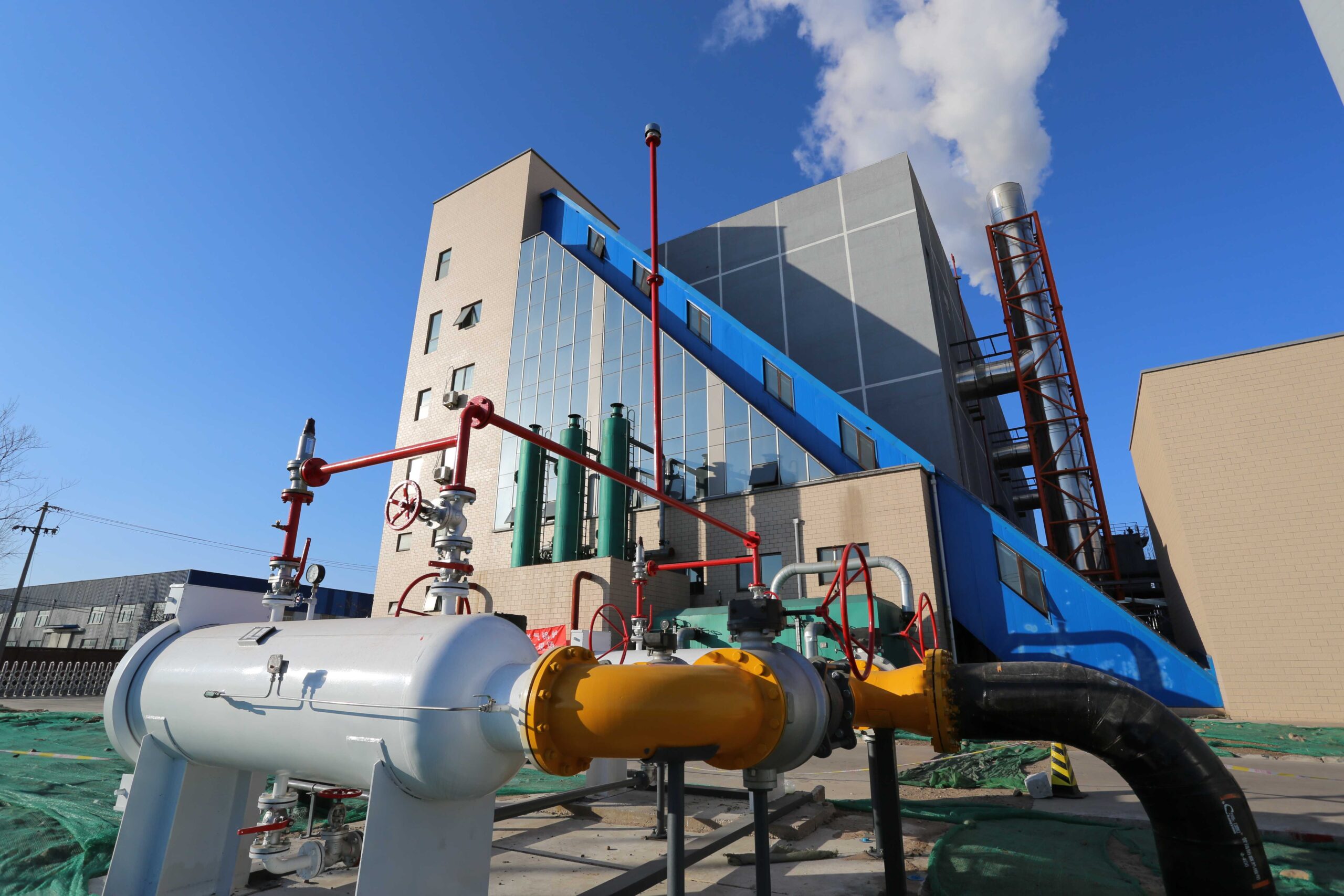
What Capital and Installation Costs Should Be Included in the Analysis?
When conducting a Lifecycle Cost Analysis (LCCA) or evaluating project feasibility for a new or replacement industrial steam boiler, one of the first steps is to establish a clear and complete capital expenditure (CAPEX) baseline. However, many decision-makers focus only on the boiler purchase price and overlook installation, site prep, auxiliary systems, controls, and startup costs—leading to underbudgeted projects, scope creep, and delayed ROI.
For industrial steam boilers, capital and installation costs include not only the boiler unit itself but also auxiliary systems (feedwater, blowdown, fuel delivery), structural integration, emission controls, controls/instrumentation, commissioning, and project management. These costs typically range from $400 to $1,200 per kW of capacity depending on boiler type, complexity, and emissions requirements. Comprehensive CAPEX accounting is essential for accurate lifecycle modeling and investment planning.
To understand the true cost of a boiler, you must look beyond the steel—and account for the system.
Installation, auxiliaries, and commissioning often double the capital cost of the boiler equipment itself.True
A boiler alone cannot operate without integrated piping, fuel systems, feedwater prep, control systems, and flue gas handling.
📊 Typical Capital Cost Breakdown – Industrial Steam Boiler Project
| Cost Component | % of Total Installed CAPEX | Description |
|---|---|---|
| Boiler Unit (shell, burner) | 25–35% | Pressure vessel, flame tube, insulation, burner |
| Feedwater & Blowdown Systems | 10–15% | Pumps, deaerator, tank, water softeners, chemical dosing |
| Piping, Valves & Steam Headers | 10–12% | Steam distribution, condensate return, boiler connections |
| Fuel Handling & Delivery | 5–10% | Oil storage tank, filters, pumps, piping |
| Stack & Emissions Equipment | 5–10% | Chimney, draft fans, NOₓ/PM controls (if applicable) |
| Control Systems (DCS/PLC/HMI) | 8–12% | Combustion controls, safety interlocks, sensors, data logging |
| Electrical & Integration | 5–7% | Motors, switchgear, wiring, MCC |
| Structural & Foundations | 4–6% | Concrete pad, supports, access platforms |
| Project Engineering & Permitting | 3–5% | Design, approvals, emissions/air permits |
| Startup & Commissioning | 2–4% | Test firing, tuning, training |
A $400,000 boiler purchase may result in a $900,000+ installed project when all real costs are included.
🔧 Key Installation Cost Categories (Expanded)
1. Boiler Skid + Pressure Parts
Includes shell, burner, mount, insulation, manway, control panel.
Often excludes valves, trim piping, and stack.
2. Mechanical Installation
Rigging, setting, alignment, field welding.
Pipefitting steam, fuel, condensate, feedwater loops.
3. Utility Tie-Ins
Electrical connection to MCC/switchgear.
Gas or oil piping from tank farm or main.
Condensate/return line routing.
4. Feedwater System
Softener system (single or dual tank).
Deaerator and makeup tank.
Boiler feed pump sizing and install.
5. Controls and Instrumentation
PID controllers, modulating valves, O₂ trim sensors.
Alarm annunciators, fault recording, interlocks.
6. Flue & Emissions System
Stack height to meet draft and code.
NOₓ burner upgrades or FGR.
PM or opacity control where mandated.
7. Site Work & Permitting
Emissions permit (NOₓ, PM, CO).
Environmental clearance or zoning approval.
On-site training and SOP development.
Installation, control integration, and utility tie-ins often exceed the cost of the boiler pressure vessel itself.True
Most operational costs and scope complexity lie in what supports and surrounds the boiler—not the boiler alone.
💵 Example: Installed Cost for 3,500 kg/h Oil-Fired Steam Boiler (10 Bar)
| Item | Estimated Cost (USD) |
|---|---|
| Boiler Unit (w/ burner) | $160,000 |
| Feedwater Skid & Pumps | $55,000 |
| Water Softening & Chemicals | $22,000 |
| Oil Storage Tank + Fuel Pumps | $48,000 |
| Steam Header + Piping | $35,000 |
| Chimney & Draft System | $26,000 |
| Control System (PLC + sensors) | $40,000 |
| Electricals (MCC, cabling, motors) | $28,000 |
| Foundation + Structural Works | $25,000 |
| Engineering, Permits & Commissioning | $31,000 |
| Total Installed Cost | ~$470,000 |
🧾 Common Oversights in CAPEX Planning
| Commonly Missed Element | Risk if Not Included |
|---|---|
| Control integration (DCS/PLC) | Delayed commissioning, rework |
| Flue draft or chimney cost | Stack code violations |
| Water treatment infrastructure | Early scaling and warranty voids |
| Emissions compliance gear | Permit rejection or retrofits |
| Fuel system upgrades | Starvation or combustion failure |
| Training and O&M documentation | Operator errors, insurance issues |
Summary
When selecting an industrial steam boiler, the purchase price tells only half the story. A complete and effective Lifecycle Cost Analysis must include every element of capital and installation cost, from the boiler itself to the pumps, tanks, controls, and compliance systems that make it operational. Ignoring these costs leads to unrealistic ROI projections, budget overruns, and underperforming systems. By planning for the true installed cost, facility owners gain financial clarity, engineering accuracy, and the confidence to make long-term, cost-effective boiler investments. Because in the world of industrial steam, what you install beyond the boiler determines how well it performs.
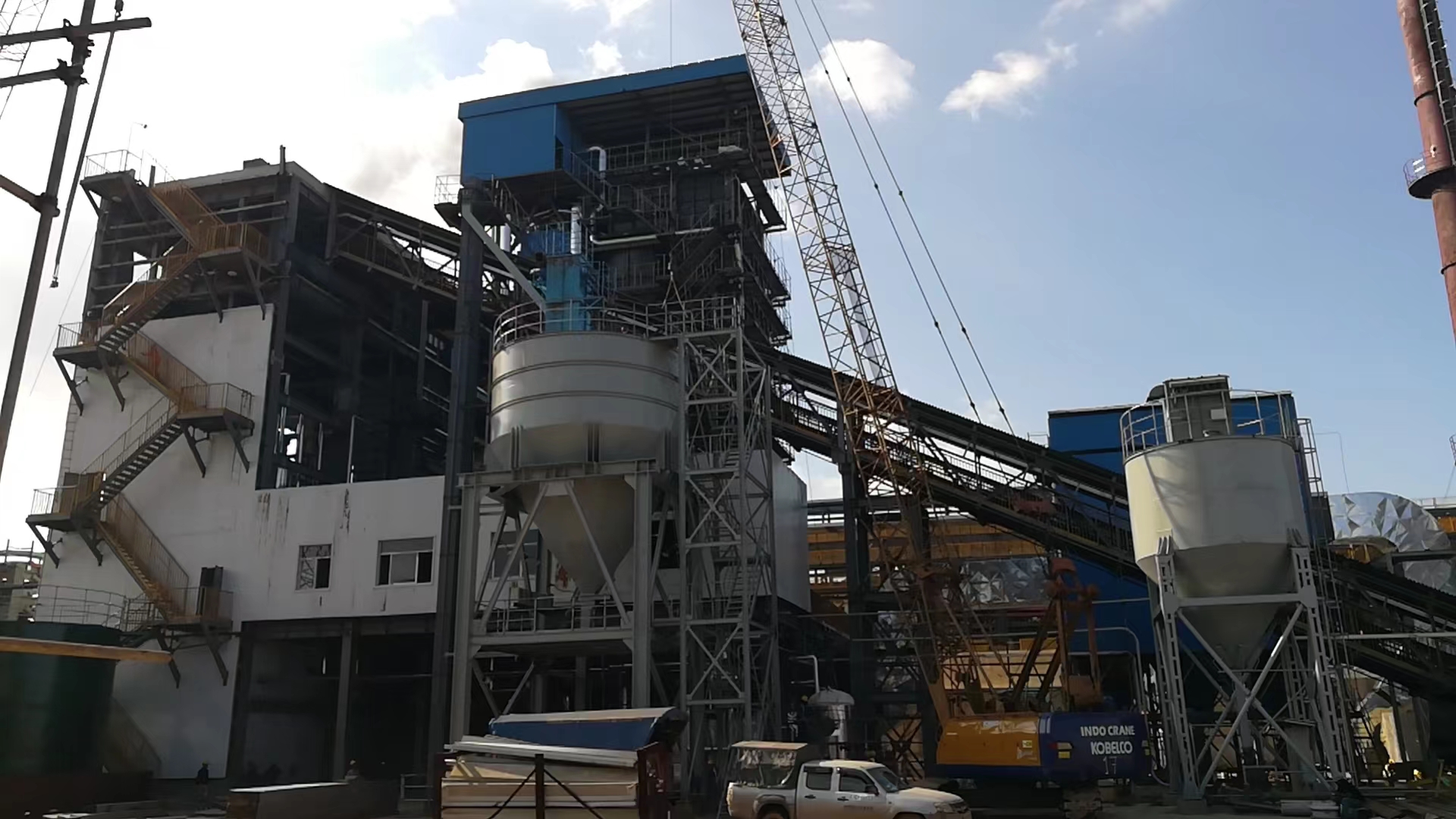
How Do You Project Long-Term Fuel, Water, and Treatment Costs Accurately?
For industrial steam boilers, fuel, water, and chemical treatment expenses make up the lion’s share of lifetime operating costs. Even small fluctuations in fuel price or water chemistry can shift total lifecycle costs by hundreds of thousands to millions of dollars over a 20–30-year operating window. As such, accurate projections of these recurring expenses are essential for realistic Lifecycle Cost Analysis (LCCA), ROI calculations, and procurement decisions.
To accurately project long-term fuel, water, and treatment costs for industrial steam boilers, you must model consumption based on boiler efficiency, load factor, and water usage rates; apply historical utility rates and supplier contracts; and account for inflation, fuel volatility, and treatment escalation. This involves using audited boiler data, fuel and water price trends, and chemical dosing schedules—factoring in operational hours and future regulatory changes. The result is a data-driven, transparent operating cost forecast that improves decision-making and financial planning.
Smart boiler selection is not just about heat—it’s about predicting what it will cost to keep that heat flowing for decades.
Fuel and water costs typically account for over 70% of a steam boiler’s lifetime operating expenses.True
These consumables are required continuously, and small inefficiencies scale massively over years of operation.
🔧 Step-by-Step Guide to Cost Projection
1. Establish Realistic Operating Parameters
| Parameter | Required for Cost Modeling |
|---|---|
| Boiler capacity (kg/h or MMBtu/h) | Determines baseline fuel/water load |
| Boiler efficiency (%) | Impacts fuel input per unit of steam output |
| Load factor (% of capacity used) | Daily and seasonal variability |
| Annual operating hours | Impacts fuel, water, chemical consumption |
| Feedwater cycle losses | Affects blowdown and makeup water rates |
Use actual or audited runtime data if available. Avoid relying on nameplate assumptions alone.
2. Project Long-Term Fuel Costs
| Fuel Projection Step | Input Needed |
|---|---|
| Select fuel type (e.g. No. 2 oil, Bunker C) | Market-specific base pricing |
| Determine boiler efficiency (η) | Typically 82–89% for oil-fired systems |
| Use consumption formula: | |
Annual Fuel Use (GJ) = Steam Load (GJ) ÷ Boiler Efficiency (η) | |
| Apply 10–20 year average price trend | Adjust for inflation or hedging |
| Model volatility range (±15–30%) | Account for geopolitical or supply risks |
📊 Example: Fuel Cost Forecast
| Parameter | Value |
|---|---|
| Steam Load | 6,000 kg/h, 8,000 hrs/yr |
| Fuel Used | No. 2 fuel oil |
| Boiler Efficiency | 85% |
| Fuel Price (2025 average) | $3.40 per gallon |
| Estimated Fuel Cost/Year | ~$870,000 |
| 10-Year Projected Cost (with 2% inflation) | ~$9.8 million |
Accurate long-term fuel modeling must account for boiler efficiency, runtime, and fuel price escalation.True
Ignoring inflation and load variability underestimates the financial burden of operating a steam boiler.
3. Estimate Water & Make-Up Usage
| Calculation Component | Detail |
|---|---|
| Feedwater Rate | Based on boiler load and steam usage |
| Blowdown Rate | Typically 2–8% of feedwater volume |
| Makeup Water Required | = Blowdown + steam losses |
| Water Unit Cost | Municipal or on-site treatment pricing |
| Water Use Formula: | |
Makeup Water (m³/year) = [Steam Output × Hours × Blowdown%] ÷ (1 - Return Rate) | |
| Add softening/RO costs if applicable | Filter replacement, electricity, brine |
💧 Example: Water Cost Projection
| Parameter | Value |
|---|---|
| Steam Production | 8,000 hrs × 6,000 kg/h |
| Blowdown Rate | 5% |
| Water Unit Price | $3.50 per 1,000 gallons |
| Estimated Annual Cost | ~$14,000 |
| 20-Year Projection (with treatment) | ~$350,000+ |
4. Forecast Chemical Treatment Costs
| Step | Input |
|---|---|
| Determine treatment regime | Based on boiler pressure and feedwater |
| Estimate dosing per m³ or per hour | Use supplier recommendations |
| Track chemical costs | Scale inhibitors, pH control, oxygen scavengers |
| Include monitoring & testing kits | Consumables + labor if outsourced |
| Annual chemical budget | $6,000 – $25,000 typical (mid-size plant) |
Expect price escalation of 2–4%/year due to chemical inflation and regulatory changes.
📋 Consolidated Forecast Table Example – 15-Year Projection
| Cost Category | Base Annual Cost | Escalation Rate | 15-Year Estimated Total |
|---|---|---|---|
| Fuel (No. 2 oil) | $870,000 | 2.5% | ~$15.8 million |
| Water Supply & Treatment | $14,000 | 2% | ~$245,000 |
| Chemical Dosing | $12,000 | 3% | ~$215,000 |
| Total Consumables Cost | — | — | ~$16.26 million |
Summary
In steam boiler ownership, what you burn and what you boil determine the majority of your operating cost. Accurately projecting fuel, water, and treatment expenses requires more than guesswork—it demands engineering rigor, historical price data, and operational transparency. From fuel price curves to blowdown percentages, each input shapes the cost trajectory of your boiler for decades. By modeling these inputs carefully, you gain a realistic, defensible operating budget—and the confidence to choose the boiler that won’t just perform, but perform profitably for the long haul.
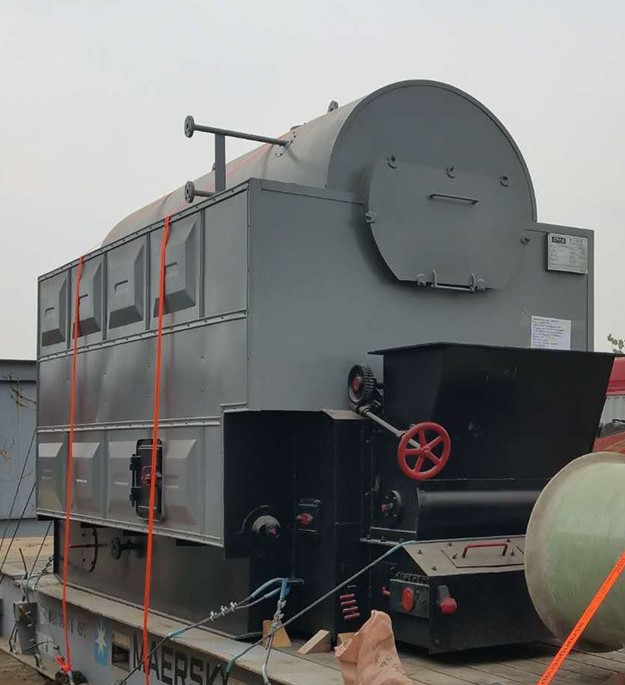
What Are the Expected Maintenance, Inspection, and Repair Costs Over Time?
An industrial steam boiler is a high-pressure, high-temperature system subject to extreme thermal cycling, chemical exposure, and mechanical stress. Over time, this environment leads to wear, corrosion, scaling, and component degradation—making regular maintenance, inspection, and repair essential to ensure safe operation, thermal efficiency, and compliance with codes. While maintenance can’t eliminate all wear, it significantly reduces unscheduled downtime, repair costs, and catastrophic failures.
For industrial steam boilers, the expected maintenance, inspection, and repair costs over time range from 2% to 5% of the boiler’s capital value per year. This includes preventive maintenance (PM), annual safety inspections, major overhauls, and unplanned repairs. Over a 20–25-year lifecycle, cumulative O&M costs can exceed 60–80% of the initial capital investment, depending on fuel type, load factor, water quality, and control systems. Proactive maintenance reduces long-term costs by preventing major failures and sustaining peak efficiency.
A boiler’s performance doesn’t decline with age—it declines with neglect.
Routine maintenance and inspections are essential to minimize long-term repair costs and ensure safety in industrial steam boilers.True
Preventive programs catch wear, corrosion, and fouling before they cause system-wide damage or unplanned shutdowns.
🔧 Categories of Maintenance Costs
| Category | Description | Frequency |
|---|---|---|
| Preventive Maintenance (PM) | Cleaning, lubrication, testing controls, blowing down | Monthly to Quarterly |
| Annual Inspections | Ultrasonic thickness testing, safety valve calibration | Annually (required by law) |
| Overhauls | Refractory relining, tube bank cleaning/replacement | Every 3–5 years |
| Unplanned Repairs | Fan bearing failures, pump seal leaks, electrical faults | As needed |
| Water Treatment Maintenance | Resin replacement, softener service, dosing recalibration | 1–2 times per year |
| Instrumentation Calibration | Sensors, transmitters, PLC logic tuning | Annually or bi-annually |
📊 Annual Maintenance & Inspection Cost Estimates
| Boiler Size (Steam Output) | Annual Maintenance & Repair Cost (USD) |
|---|---|
| 1–2 tons/hour (Small) | $5,000 – $12,000 |
| 5–10 tons/hour (Medium) | $15,000 – $40,000 |
| 15–30 tons/hour (Large) | $50,000 – $100,000+ |
A well-maintained system costs less to operate and has fewer unexpected shutdowns.
📈 Long-Term Cost Projection (20-Year Horizon)
| Cost Element | Average Cost/Year | Cumulative Over 20 Years |
|---|---|---|
| PM + Safety Checks | $8,000 | $160,000 |
| Annual Compliance Inspection | $5,000 | $100,000 |
| Major Overhauls (every 5 years) | $40,000 | $160,000 |
| Emergency Repairs (avg.) | $6,000 | $120,000 |
| Instrumentation Recalibration | $4,000 | $80,000 |
| Total Estimated Lifecycle Maintenance | — | $620,000 |
For a $300,000–$500,000 boiler, O&M equals 125–200% of initial CAPEX over 20–25 years.
🔍 Common High-Cost Repairs and Their Triggers
| Component Affected | Common Failures | Repair Cost Range (USD) |
|---|---|---|
| Waterwall Tubes | Erosion, scaling, pitting leaks | $5,000 – $20,000+ |
| Burners & Igniters | Nozzle wear, fouling, misfire | $3,000 – $10,000 |
| Feedwater Pumps | Seal leaks, bearing failure | $2,500 – $7,000 |
| Refractory Brickwork | Cracking, hot spots, degradation | $10,000 – $30,000 |
| Flame Sensors/PLC | Faulty readings, false shutdowns | $2,000 – $6,000 |
| Stack or Draft Fan | Motor failure, impeller erosion | $4,000 – $12,000 |
Major steam boiler repairs can cost tens of thousands of dollars, especially if failures are not caught during routine inspections.True
Neglecting maintenance leads to accelerated wear and higher cost interventions over time.
✅ Best Practices to Minimize Lifecycle Maintenance Costs
| Strategy | Benefit |
|---|---|
| Implement CMMS (maintenance software) | Tracks schedules, logs failures |
| Use predictive tools (vibration, thermography) | Catches faults early |
| Train in-house operators | Reduces reliance on expensive emergency service |
| Conduct pre-season burner checks | Avoids startup failures |
| Partner with OEM-certified service teams | Ensures correct replacement specs |
| Maintain water chemistry & blowdown | Prevents tube scale and corrosion |
Summary
Over its lifetime, an industrial steam boiler may cost more to maintain and repair than it did to install. But with a smart, disciplined maintenance strategy—including regular inspections, predictive analytics, and proper water treatment—these costs can be kept under control. A well-maintained boiler lasts longer, operates more efficiently, and stays compliant with safety regulations. In industrial steam, reliability is not luck—it’s planned, scheduled, and earned through ongoing investment.
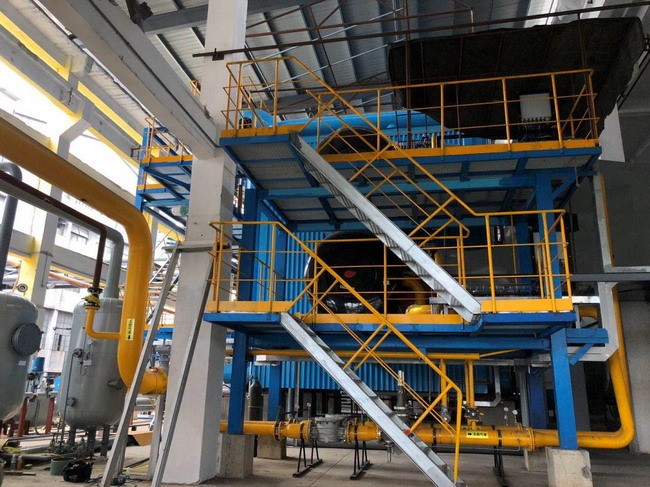
How Do Regulatory Compliance, Emissions, and Efficiency Losses Affect Lifecycle Expenses?
In the lifecycle of an industrial steam boiler, regulatory compliance, emissions control, and efficiency losses aren’t just operational concerns—they’re significant financial drivers. Over 20–30 years, these elements can add hundreds of thousands to millions of dollars in operating expenses if not properly managed. Governments increasingly regulate emissions (NOₓ, SO₂, PM, and CO₂), while energy costs rise and equipment ages. Facilities that fail to address these factors early on face higher fuel bills, environmental fines, and forced capital upgrades—all of which erode the return on investment.
Regulatory compliance, emissions control, and efficiency losses affect the lifecycle expenses of industrial steam boilers by driving up fuel costs, adding monitoring and treatment expenses, and increasing the likelihood of fines or retrofits. Boilers that operate below efficiency or exceed emissions thresholds consume more fuel, incur higher reagent costs, and may require upgrades to stay permitted. Over time, these hidden costs can exceed the boiler’s original capital investment if not anticipated and controlled.
Compliance isn’t optional—and neglecting efficiency is the most expensive mistake you’ll never see coming until it’s too late.
Efficiency loss and emissions compliance are major contributors to long-term boiler operating costs, often exceeding maintenance costs.True
Falling efficiency raises fuel bills dramatically, while emissions regulations require costly monitoring and equipment upgrades.
📊 Lifecycle Impact Categories Breakdown
| Category | Financial Impact Over Lifecycle (Est. %) |
|---|---|
| Fuel/efficiency loss | 50–65% |
| Emissions compliance (NOₓ, SO₂, CO₂) | 10–20% |
| Monitoring & inspections | 5–10% |
| Retrofits & penalties | 5–15% (risk-weighted) |
| Routine maintenance | 10–15% |
🔥 1. Efficiency Loss: Fuel Cost Multiplier
| Cause of Efficiency Loss | Impact on Fuel Consumption |
|---|---|
| Tube scaling or fouling | 2–8% more fuel required per MWh |
| Soot/ash buildup on heat surfaces | Up to 10% drop in heat transfer |
| Burner misalignment or poor O₂ control | 3–6% increase in excess air/fuel waste |
| Improper blowdown or feedwater temp | Reduces steam energy output per unit fuel |
📉 Example: Fuel Cost Escalation with 6% Efficiency Loss
| Base Fuel Cost/Year: $900,000 |
| Efficiency Loss: 6% |
| Additional Fuel Cost/Year: ~$54,000
| 20-Year Impact: ~$1.08 million
Just 1% loss in efficiency can raise annual fuel bills by $9,000–$30,000 depending on boiler size and fuel type.
🌫️ 2. Emissions Compliance Costs
| Component | Cost Range (Annual) | Notes |
|---|---|---|
| NOₓ burner tuning/upgrades | $3,000 – $25,000 | Required for air permit renewals |
| Emissions testing & CEMS | $5,000 – $12,000 | Annual or bi-annual compliance |
| SO₂/PM controls (if oil-fired) | $8,000 – $25,000 | Baghouse or wet scrubber if required |
| CO₂ carbon pricing/tax | $20–$90/ton (future trending) | Adds $15,000–$75,000/year in carbon-heavy markets |
Fines for non-compliance can exceed $100,000/year or result in shutdown orders.
🧾 3. Regulatory Inspection & Monitoring Costs
| Requirement | Frequency | Typical Cost (USD/year) |
|---|---|---|
| Annual boiler inspection (ASME/insurance) | Yearly | $3,000 – $7,500 |
| State air quality permit renewal | Every 3–5 yrs | $2,500 – $10,000 |
| Stack testing & lab analysis | Yearly | $4,000 – $8,000 |
| Control recalibration & certification | Annually | $1,500 – $3,000 |
Industrial boilers require recurring emissions testing, instrumentation checks, and environmental reporting to maintain operating permits.True
Failing to comply can lead to fines, increased oversight, and potential shutdown.
🧰 4. Retrofit & Non-Compliance Risk Costs
| Scenario | Likely Cost Impact (USD) |
|---|---|
| Retrofit for low-NOₓ burners | $25,000 – $60,000 |
| Stack upgrade for opacity/PM | $30,000 – $90,000 |
| Emergency derating due to violations | $100,000+ in lost output |
| Legal/regulatory penalties | $10,000 – $250,000 |
📈 Projected 20-Year Lifecycle Cost Model Example
| Category | Cost Estimate (USD) |
|---|---|
| Fuel usage (base) | $16 million |
| Efficiency degradation impact (6%) | +$1.08 million |
| Emissions compliance costs | $400,000 |
| Testing, monitoring, permits | $180,000 |
| Efficiency-related repairs | $300,000 |
| Total Additional Lifecycle Expense | ~$2 million+ |
✅ Mitigation Strategies
| Action | Impact |
|---|---|
| Annual burner calibration & O₂ tuning | Maintains high combustion efficiency |
| Scheduled tube cleaning/descaling | Preserves heat transfer effectiveness |
| Install economizer & stack temp monitor | Detects declining efficiency early |
| Use predictive analytics for fouling | Prevents unplanned fuel waste |
| Track emissions data in real-time | Avoids permit violations |
Summary
The cost of operating a steam boiler isn’t just about fuel or maintenance—it’s about staying compliant, efficient, and in control over decades of use. Failure to manage emissions or efficiency loss compounds into higher operating costs, costly retrofits, and legal risk. With tighter environmental regulations and rising energy prices, the most successful facilities treat compliance and efficiency as ongoing investments—not one-time upgrades. In a modern industrial boiler room, compliance is currency, and efficiency is equity. Don’t lose either.
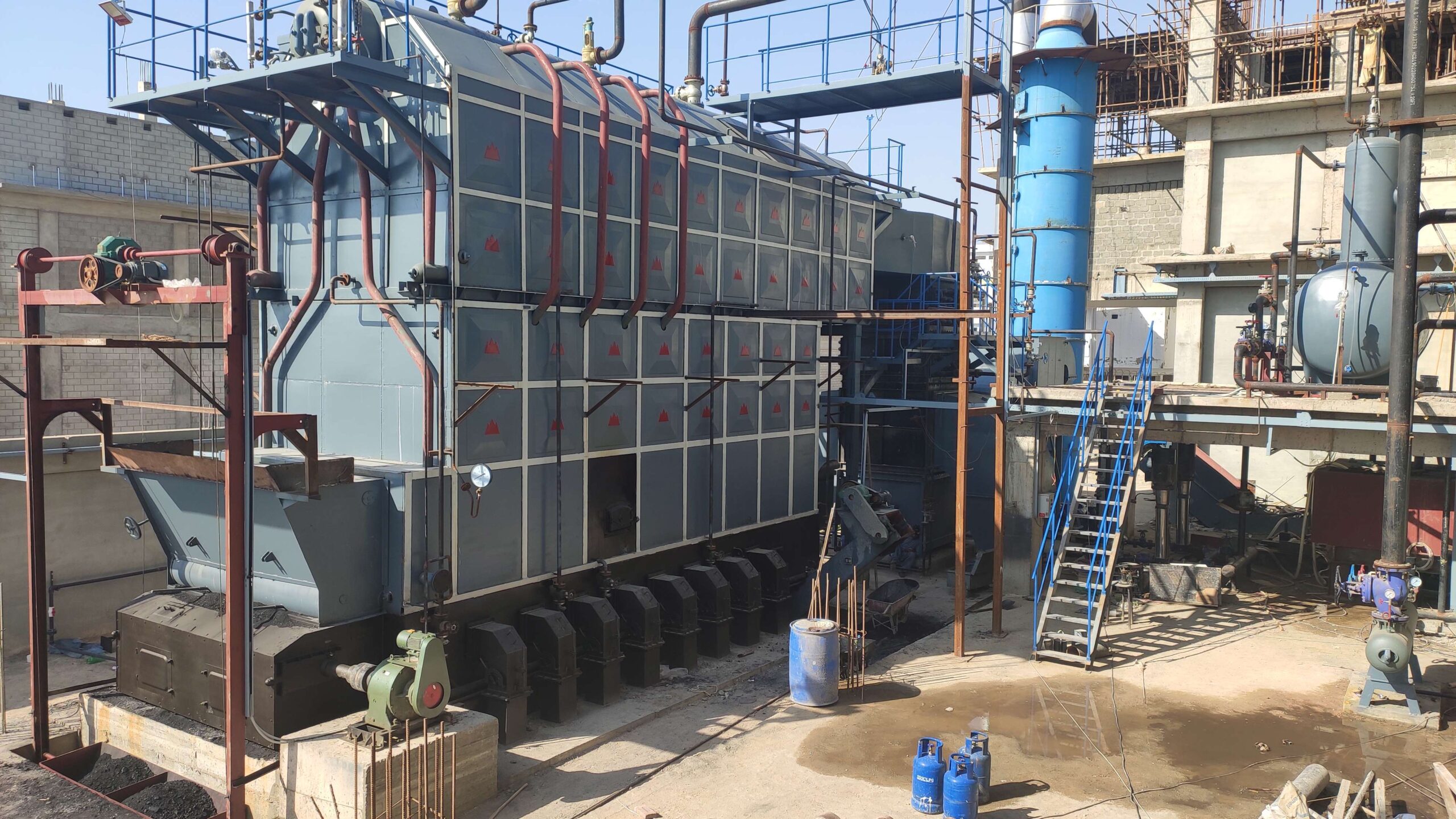
How Can TCO, ROI, and Payback Period Be Calculated to Guide Procurement Decisions?
When purchasing a new industrial steam boiler, the decision isn’t just about buying the cheapest unit—it’s about selecting the boiler that will deliver the best value over its entire lifecycle. To do this effectively, procurement teams and plant managers must calculate three key financial metrics: Total Cost of Ownership (TCO), Return on Investment (ROI), and Payback Period. These tools allow decision-makers to compare systems based on real operating costs, not just initial price tags.
TCO, ROI, and Payback Period are financial metrics used to evaluate the cost-effectiveness of an industrial steam boiler investment. TCO calculates the total cost over the boiler’s life—including capital, fuel, maintenance, and compliance. ROI measures the percentage return on that investment based on savings or revenue generation. Payback Period tells you how long it takes for savings to recover the initial cost. These calculations help buyers compare boiler options objectively and choose the system that provides the best long-term financial performance.
You don’t just buy a boiler—you invest in decades of efficiency, reliability, and compliance.
TCO, ROI, and Payback Period are essential financial metrics for comparing steam boiler investments and optimizing procurement decisions.True
They provide a complete picture of cost, benefit, and financial return over the system’s operating life.
🧮 1. Total Cost of Ownership (TCO)
TCO = CAPEX + OPEX over lifecycle
| Category | Description |
|---|---|
| CAPEX | Purchase, installation, and auxiliary equipment |
| Fuel Costs | Largest lifecycle cost—based on efficiency/load |
| Maintenance & Repairs | Preventive and corrective service over years |
| Water & Treatment | Blowdown, softeners, dosing chemicals |
| Emissions Compliance | Reagents, testing, carbon tax, NOₓ/PM controls |
| Monitoring & Labor | Annual inspection, staff costs |
| Decommissioning | Site cleanup, equipment removal (optional) |
📊 Example – 15-Year TCO Comparison
| Boiler Type | Oil-Fired System A | High-Efficiency System B |
|---|---|---|
| Installed CAPEX | $350,000 | $450,000 |
| 15-Year Fuel Cost | $7.5 million | $6.1 million |
| Maintenance & Parts | $450,000 | $400,000 |
| Compliance & Testing | $280,000 | $200,000 |
| Total TCO | $8.58 million | $7.15 million |
Even with higher upfront cost, System B saves $1.43 million over 15 years.
📈 2. Return on Investment (ROI)
ROI = (Net Savings or Gains ÷ Total Investment) × 100%
🧾 Simple ROI Formula:
ROI = [(TCO of baseline – TCO of selected option) ÷ CAPEX of selected option] × 100
📋 Example:
TCO of baseline boiler: $8.58 million
TCO of selected boiler: $7.15 million
Net savings = $1.43 million
Investment (CAPEX) = $450,000
ROI = ($1.43M ÷ $0.45M) × 100 = **317.8%**
Every $1 spent yields $3.17 in savings over 15 years.
⏳ 3. Payback Period
Payback Period = Initial Investment ÷ Annual Net Savings
| Item | Value |
|---|---|
| Investment (CAPEX difference) | $100,000 |
| Annual savings in fuel, O&M | $95,000 |
| Payback Period | ~1.05 years |
After the payback period, all savings become profit for the remainder of the boiler’s life.
🧾 Sample Consolidated Boiler Financial Summary
| Metric | Value |
|---|---|
| Installed Cost (CAPEX) | $450,000 |
| Total 15-Year OPEX | $6.7 million |
| TCO (15 years) | $7.15 million |
| Net Savings (vs. baseline) | $1.43 million |
| ROI | 318% |
| Payback Period | ~1.05 years |
Boilers with higher upfront cost can yield higher ROI and faster payback when total fuel and maintenance savings are considered.True
Procurement decisions should be based on lifecycle economics, not purchase price alone.
✅ Best Practices for Accurate Financial Analysis
| Strategy | Purpose |
|---|---|
| Use vendor-provided efficiency data | Ensures realistic fuel consumption models |
| Include utility escalation assumptions | Reflects true operating cost trends |
| Include permit and compliance factors | Prevents future surprise costs |
| Compare multiple vendor bids | Ensures accurate CAPEX benchmarking |
| Involve finance & operations teams | Cross-checks cost projections and risks |
Summary
In the procurement of industrial steam boilers, total value matters more than sticker price. Using TCO, ROI, and Payback Period as decision tools empowers buyers to assess boiler systems based on how much they’ll cost, how much they’ll save, and how soon they’ll pay for themselves. These metrics bring clarity to long-term cost planning and help facilities choose systems that maximize efficiency, minimize emissions, and deliver financial performance year after year. In boiler investment strategy, the smartest spenders are the ones who calculate before they commit.
🔍 Conclusion
Lifecycle cost analysis is an essential tool for evaluating the true value and risk of an industrial steam boiler investment. By factoring in both upfront and recurring costs, LCCA allows you to compare systems fairly, plan for long-term expenses, and avoid underperforming assets. The result: a smarter purchase, more efficient operations, and greater financial and environmental sustainability.
📞 Contact Us
💡 Need assistance conducting a boiler lifecycle cost analysis? Our team offers custom LCCA models, energy usage forecasting, and procurement consulting tailored to your application.
🔹 Let us help you choose a steam boiler that delivers long-term performance, efficiency, and value! ♨️📊💰
FAQ
What is a lifecycle cost analysis (LCCA) for an industrial steam boiler?
Lifecycle cost analysis is a financial evaluation of all costs associated with a steam boiler over its operational lifespan. This includes:
Capital cost (purchase + installation)
Fuel consumption over time
Operation and maintenance (O&M)
Water treatment and emissions compliance
Decommissioning or replacement costs
The purpose is to calculate the Total Cost of Ownership (TCO) to support long-term investment decisions.
What are the main components of a steam boiler lifecycle cost analysis?
Capital Cost – Equipment, controls, auxiliary systems, and installation
Fuel Costs – Based on efficiency, run hours, and fuel type (gas, oil, biomass)
O&M Costs – Annual inspections, cleanings, replacements, and repairs
Water Treatment – Softening, deaeration, and chemical dosing systems
Compliance Costs – Emissions permits, monitoring systems, and NOx/SOx controls
End-of-Life Costs – Decommissioning or boiler replacement planning
How do you calculate the annual fuel cost for a steam boiler?
Annual Fuel Cost = (Fuel Consumption Rate × Operating Hours × Fuel Price)
Example: A boiler using 10 MMBtu/hr for 6,000 hours/year with natural gas at $10/MMBtu would cost:
10 × 6,000 × $10 = $600,000/year
Adjust for boiler efficiency, which directly impacts actual fuel use.
What is a typical lifespan for a steam boiler?
Industrial steam boilers generally operate for 20–25 years, assuming proper maintenance. This is the baseline period used for lifecycle cost modeling.
Why is LCCA important when selecting or upgrading a steam boiler?
LCCA helps compare long-term value across different boiler types (e.g., fire-tube vs. water-tube), fuels, and efficiency ratings. It ensures you don’t overlook cheaper upfront options that result in higher fuel and maintenance costs over time.
References
Lifecycle Cost Analysis Guidelines – DOE – https://www.energy.gov
Boiler Efficiency and Cost Modeling Tools – https://www.iea.org
Fuel Cost Trends and Consumption Calculations – https://www.eia.gov
Boiler O&M Cost Analysis Reports – https://www.sciencedirect.com
Water Treatment Cost in Steam Systems – https://www.epa.gov
Steam Boiler Replacement and Decommissioning Costs – https://www.researchgate.net
Industrial Boiler LCCA Calculator Tools – https://www.energystar.gov
ASME Guidelines on Steam Boiler Design and Lifespan – https://www.asme.org
Emission Compliance for Industrial Boilers – https://www.bioenergyconsult.com
NASEO State Energy Office Incentives and Cost Studies – https://www.naseo.org

